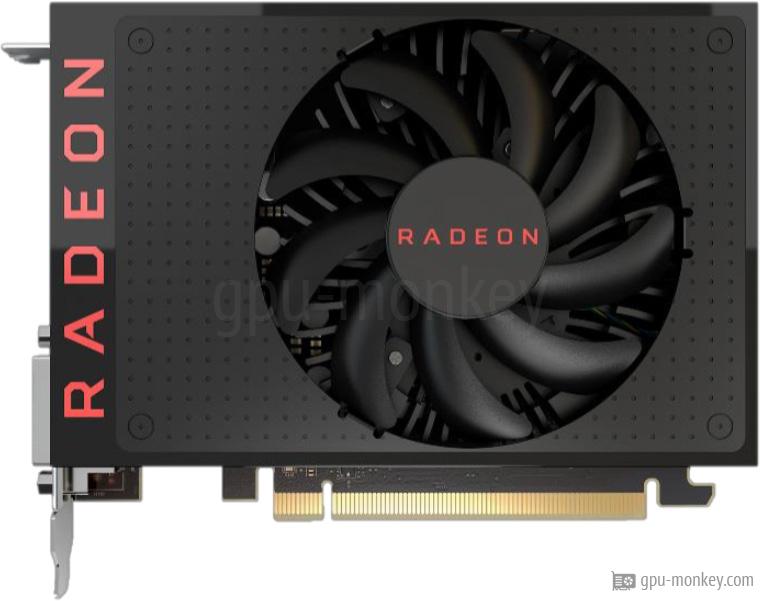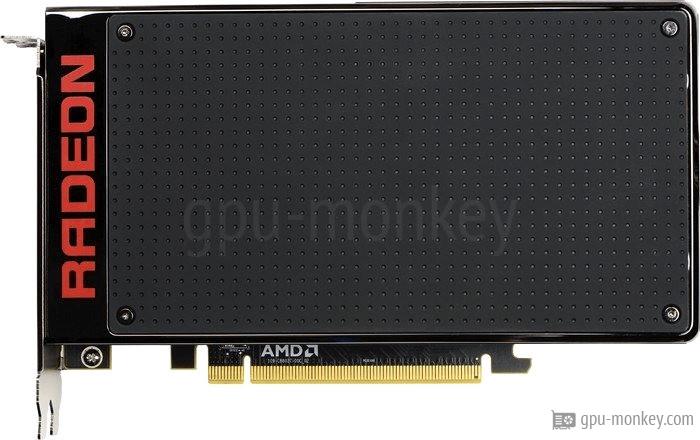AMD Radeon RX 460 (16CU)
vs
AMD Radeon R9 Fury X
GPU comparison with benchmarksIn the gpu comparison between the AMD Radeon RX 460 (16CU) and the AMD Radeon R9 Fury X, we compare both the technical data and the benchmark results of the two graphics cards.
|
||
GPUThe AMD Radeon RX 460 (16CU) is based on the AMD Radeon RX 460 (16CU) and has 1024 texture shaders and 16 execution units. AMD Radeon R9 Fury X is based on AMD Radeon R9 FURY X, which has 4096 shaders and 64 execution units. |
||
| AMD Radeon RX 460 (16CU) | GPU | AMD Radeon R9 Fury X |
| AMD Radeon RX 460 (16CU) | Based on | AMD Radeon R9 FURY X |
| Baffin XT | GPU Chip | Fiji XT C8 |
| Baffin | Architecture | Fiji |
| 16 | Streaming Multiprocessors | 64 |
| 1024 | Shader | 4096 |
| 16 | Render Output Units | 64 |
| 64 | Texture Units | 256 |
| 0 | Raytracing Cores | 0 |
MemoryThe AMD Radeon RX 460 (16CU) has 2 GB of graphics memory of the type GDDR5 and achieves a memory bandwidth of 112 GB/s. The AMD Radeon R9 Fury X can access 4 GB HBM graphics memory and thus achieves a memory bandwidth of 512 GB/s. |
||
| 2 GB | Memory Size | 4 GB |
| GDDR5 | Memory Type | HBM |
| 1.750 GHz | Memory Clock | 0.500 GHz |
| 7.0 Gbps | Memory Speed | 1.0 Gbps |
| 112 GB/s | Memory bandwidth | 512 GB/s |
| 128 bit | Memory Interface | 4096 bit |
Clock SpeedsThe AMD Radeon RX 460 (16CU) clocks in the base with up to 1.090 GHz. The base frequency of the AMD Radeon R9 Fury X is 1.050 GHz. |
||
| 1.090 GHz | Base Clock | 1.050 GHz |
| 1.200 GHz | Boost Clock | 1.050 GHz |
| Avg (Game) Clock | ||
| Yes | Overclocking | Yes |
Thermal DesignThe TDP (Thermal Design Power) of the AMD Radeon RX 460 (16CU) is 75 W. The graphics card is supplied with energy via the connector. The AMD Radeon R9 Fury X has a TDP of 275 W and is supplied with the required energy via 2 x 8-Pin PCIe power connectors. |
||
| 75 W | TDP | 275 W |
| -- | TDP (up) | -- |
| 95 °C | Tjunction max | 90 °C |
| PCIe-Power | 2 x 8-Pin | |
Cooler & FansThe AMD Radeon RX 460 (16CU) has a total of 1 Axial fans. The AMD Radeon R9 Fury X has 1 Axial (Radiator) fans to cool the GPU and memory. |
||
| Axial | Fan-Type | Axial (Radiator) |
| 1 x 90 mm | Fan 1 | 1 x 120 mm |
| -- | Fan 2 | -- |
| Air cooling | Cooler-Type | AIO water cooling |
| dB | Noise (Idle) | dB |
| -- | Noise (Load) | -- |
ConnectivityIn the connectivity category, we recorded the number of ports on a graphics card. A total of 3 screens can be connected to the AMD Radeon RX 460 (16CU). The AMD Radeon R9 Fury X supports a maximum of 4 screens. |
||
| 3 | Max. Displays | 4 |
| 2.2 | HDCP-Version | 0 |
| 1x HDMI v2.0b | HDMI Ports | 1x HDMI v1.4a |
| 1x DP v1.4a | DP Ports | 3x DP v1.2 |
| 1 | DVI Ports | -- |
| -- | VGA Ports | -- |
| -- | USB-C Ports | -- |
FeaturesetThe AMD Radeon RX 460 (16CU) supports a maximum resolution of 7680x4320 pixels. The maximum resolution of the AMD Radeon R9 Fury X is 4096x2160 pixels. |
||
| 7680x4320 | Max. resolution | 4096x2160 |
| 12_0 | DirectX | 12_0 |
| No | Raytracing | No |
| Yes | DLSS / FSR | No |
| No LED lighting | LED | No LED lighting |
Supported Video CodecsThe support and acceleration of certain video codecs directly in the graphics card reduces the load when playing or creating videos. |
||
| Decode / Encode | h264 | Decode / Encode |
| Decode / Encode | h265 / HEVC | Decode |
| No | AV1 | No |
| No | VP8 | No |
| No | VP9 | No |
DimensionsThe AMD Radeon RX 460 (16CU) is -- long, -- high and -- wide. The AMD Radeon R9 Fury X is 195 mm long, 115 mm high and 39 mm wide. |
||
| -- | Length | 195 mm |
| -- | Height | 115 mm |
| -- | Width | 39 mm |
| -- | Width (Slots) | 2 PCIe-Slots |
| -- | Weight | -- |
| PCIe 3.0 x 8 | GPU Interface | PCIe 3.0 x 16 |
Additional dataThe AMD Radeon RX 460 (16CU) was released in Q1/2017 at a price of 139 $ (Reference). The AMD Radeon R9 Fury X was introduced in Q2/2015 at a price of 649 $ (Reference). |
||
| -- | Part-no | -- |
| Q1/2017 | Release date | Q2/2015 |
| 139 $ (Reference) | Launch Price | 649 $ (Reference) |
| 14 nm | Structure size | 28 nm |
| data sheet | Documents | data sheet |
Rate these graphics cards now
Benchmark results
3DMark Benchmark (DirectX, Raytracing)
3DMark is a benchmark program that determines the performance of certain components of a computer and then reports the performance as a numerical value.
Time Spy Extreme Graphics score
|
|
AMD Radeon RX 460 (16CU)
2 GB GDDR5 |
||
|
|
AMD Radeon R9 Fury X
4 GB HBM |
||
Geekbench 6 (OpenCL, Vulkan, Metal)
Geekbench 6 is a cross-platform benchmark for main processors, which also carries out 3 different graphics benchmarks and outputs them in the form of a numerical value.
Geekbench 6 - OpenCL
|
|
AMD Radeon RX 460 (16CU)
2 GB GDDR5 |
||
|
|
AMD Radeon R9 Fury X
4 GB HBM |
||
Geekbench 6 - Vulkan
|
|
AMD Radeon RX 460 (16CU)
2 GB GDDR5 |
||
|
|
AMD Radeon R9 Fury X
4 GB HBM |
||
Geekbench 6 - Metal
|
|
AMD Radeon RX 460 (16CU)
2 GB GDDR5 |
||
|
|
AMD Radeon R9 Fury X
4 GB HBM |
||
FP32 Performance (Single-precision TFLOPS)
The theoretical computing power of the graphics card with single precision (32 bit) in TFLOPS indicates how many trillion FP32 floating point operations the graphics card (GPU) can perform per second.
FP32 (TFLOPS)
|
|
AMD Radeon RX 460 (16CU)
2 GB GDDR5 |
||
|
|
AMD Radeon R9 Fury X
4 GB HBM |
||






